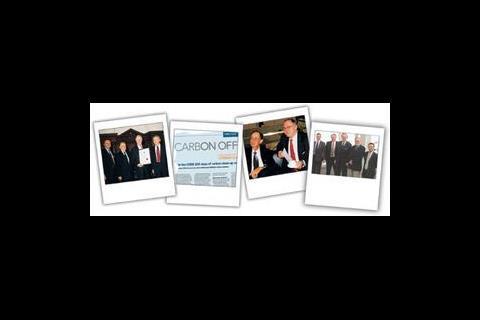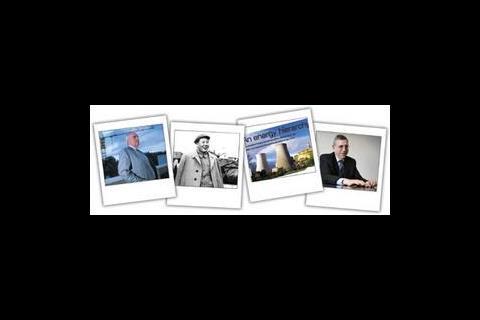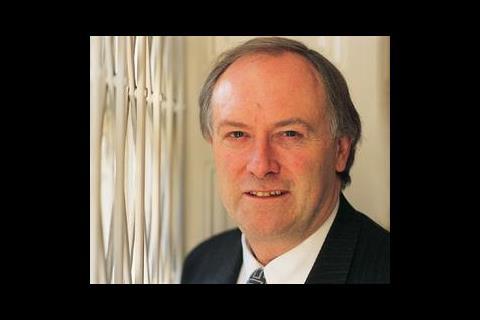Julian Amey, who is to leave CIBSE after five years as chief executive, says he joined the Institution at a particularly exciting time. He looks back on the events that shaped his time at the helm
Just one week after I joined CIBSE, on 11 September 2001, the planes crashed into the World Trade Centre towers in New York. Suddenly, we all entered a new world, apparently full of threats and dangers.
In spite of that, looking back on the five years I have spent with CIBSE since 2001, I feel I joined at a particularly exciting time. The Hawley Review into the future of engineering, science and technology had resulted in the setting up of the Engineering and Technology Board, and in response the G15 grouping of engineering institutions was beginning to interact; the CIC inaugurated the Futures Group to look at how the institutions within CIC could co-operate better, and the five bodies that form the SOJACES group started planning ‘Think 2010' - a two day brainstorm on the threats and opportunities facing our sector.
On the home front, CIBSE was in the throes of a major Engineering Council Audit and the revised Part L was some way off. It was a bit like Winds of Change meets Apocalypse Now.
For a mere economist to have been chosen as chief executive of CIBSE was a distinct honour - and not a little daunting. I am grateful to Max Fordham, the inspirational CIBSE president at the time, and the selection panel, for taking a leap of faith in appointing me. My studies of Marx and Engels had not introduced me to M&E and I hardly knew my RIBA from my SBEM. My reading of CP Snow, however, and the fact that my great grandfather had a foundry and engineered some of the first motor cars in Northamptonshire, had given me a yearning to bridge the Two Cultures. I wanted to move out of my comfort zone and get involved in the cut and thrust of science, engineering and technology.
This all coincided with CIBSE assuming centre stage in dealing with some of the major issues of our time - climate change, the quest for energy efficiency and intelligent buildings. To be told to grow membership, raise the Institution's profile nationally and internationally, develop our knowledge base and range of publications, and to influence government policy, sounded like a really worthwhile challenge. To avoid being merged into a ‘mega-institution' while championing greater co-operation with other bodies and achieving greater impact, sounded daunting. And to move from being strong in Hong Kong to establishing CIBSE in China seemed a tall order in 2001.
My great good fortune is that I have been able to work with colleagues in my staff team, the CIBSE membership and in the wider profession, of the highest calibre.
Edinburgh challenge
A seminal moment for me was our Edinburgh International Conference in September 2003 - in conjunction with ASHRAE, and still in the shadow of 9/11. Our challenge was to put on an event substantially bigger than ever before, with only tentative support from our American colleagues, in conjunction with other institutions, and with substantial sponsorship from industry. Terry Wyatt's presidential theme was ‘Adapt or Die' and I vividly remember our wise honorary treasurer Terry Giles saying "…young man, if this goes pear-shaped, it's your head for the chop, not the President's."
This concentrated the mind, and Terry Wyatt and I got on our bikes and knocked on the door of every industry leader, government minister and eminent speaker who would come for no fee. The CIBSE Board was magnificent. Having done a risk analysis from every conceivable angle, and found that the event was, indeed, very high risk, they breathed deeply and signed on the dotted line. The rest is history - the Edinburgh Conference was a huge success, with over 300 delegates and three parallel strands of technical presentations. The government minister Nigel Griffiths - by wonderful coincidence, an Edinburgh MP - opened the conference; the CIC, for the first time ever, held a full Council meeting outside London alongside the conference; and the IMechE, IstructE, ICE and RIBA - who had never knowingly co-operated with another institution before, jointly badged the conference and sent their presidents as delegates. The word was out - CIBSE delivers, and has real influence.
This rather extended anecdote represents for me the broader positive changes that are taking place in our industry. In place of strife, and through ‘Rethinking Construction', ‘Accelerating Change' and ‘Constructing Excellence' we are, with enduring support from Donald Leeper, taking steps towards the integrated team, worthwhile partnerships and a safer, more innovative and professional industry. Our CIBSE Patrons Group, which reached 100 members in March this year, is providing and co-ordinating over 20 bursaries for students at UK universities and colleges, in part fulfilling the challenge of Doug Oughton's presidential theme: ‘Supply Chain to the Profession'.
In place of strife, we are taking steps towards the integrated team, worthwhile partnerships and a safer, move innovative and professional industry
On the international front, and responding to Dan Mackenzie's exhortations in the April edition of BSJ, our relations with Hong Kong and China, Australia and New Zealand, the USA, Europe and, more recently, Dubai are developing fast. One example of this is the joint CIBSE/ASHRAE Statement on Climate Change, ably negotiated by Graham Manly during his presidential year and signed at the ASHRAE winter conference in January.
Another is the emergence of PIUK (Professional Institutions UK, linking CIBSE, CIOB,RIBA, ICE and 10 others) - a CIBSE initiative in which I have taken a keen interest, which is now a force in China. The signature of a contract for joint publications and local printing between CIBSE and Chonqing University Press in March marks another great step forward for CIBSE - David Hughes, CIBSE international champion and now president, has been instrumental in achieving this.
Back in the UK, CIBSE has played a key role in the G15 group of engineering institutions, to ensure it has a strong voice with government on policy areas such as the Energy Review, promoting engineering in schools and universities, and the vital importance of funding for research.
Not too big, not too small
So where does CIBSE, with its 17,300 members, now sit in a sector where the recently launched IET (Institute of Engineering and Technology - former IEE and IiE) has 150,000 members and its own TV channel? As objectively as I can, I judge that the engineering and construction-related institutions add greatest value when they avoid excessive size and bureaucracy and concentrate on empowering small creative teams to extend the boundaries of knowledge. "Let a thousand flowers bloom" said Mao Tse Tung, and I draw a parallel with our CIBSE special interest groups, which are the catalyst for the generation of ideas and the evolution of knowledge.
The impact achieved by our Society of Facade Engineering and Energy Performance Group represent two classic examples. Nurtured and fostered by active CIBSE members harnessing the creativity of their colleagues and those of other institutions, they are disseminating knowledge and best practice globally. The launch of our Low Carbon Consultants register and the '100 days of Carbon Clean Up', supported by the Carbon Trust, are the outcome of a small group of energetic people empowered to do a job well.
Governments usually struggle to deliver much in their five-year terms, but as a team CIBSE has achieved a lot. Not the biggest institution, but one of the most influential, nationally and internationally. Not the biggest publisher, but highly respected in its sector. Not the biggest events and training organiser, but with an enviable track record of collaboration and reaching wide audiences. Large enough to have critical mass, but not so large that it stifles innovation and the ability to adapt to change. Much done, but so much more to do.
As I move on, with an enormous sense of gratitude to all those who have supported me so well, I am confident that the stage is set for CIBSE to extend its influence and prestige more widely in the future. I wish the Institution and all its people the very best, and will continue to take a keen interest in its progress.
Source
Building Sustainable Design
Postscript
Julian Amey will leave CIBSE in July to become chief executive of Trinity College London.

























No comments yet